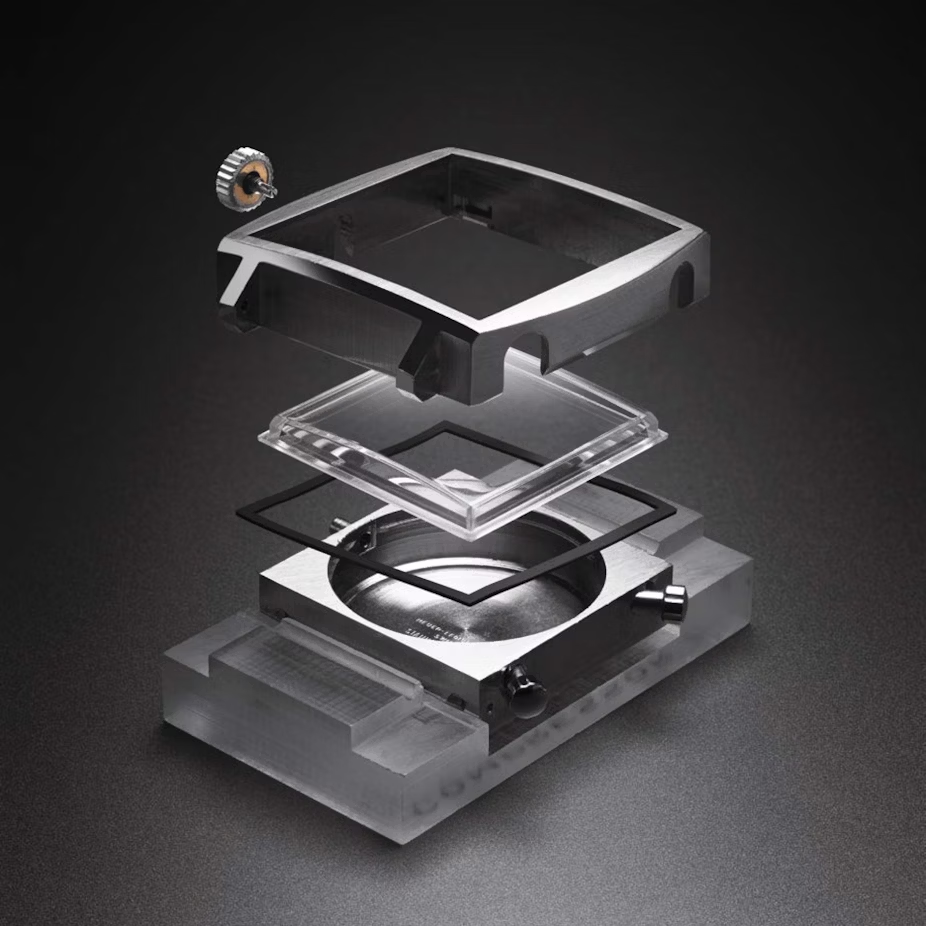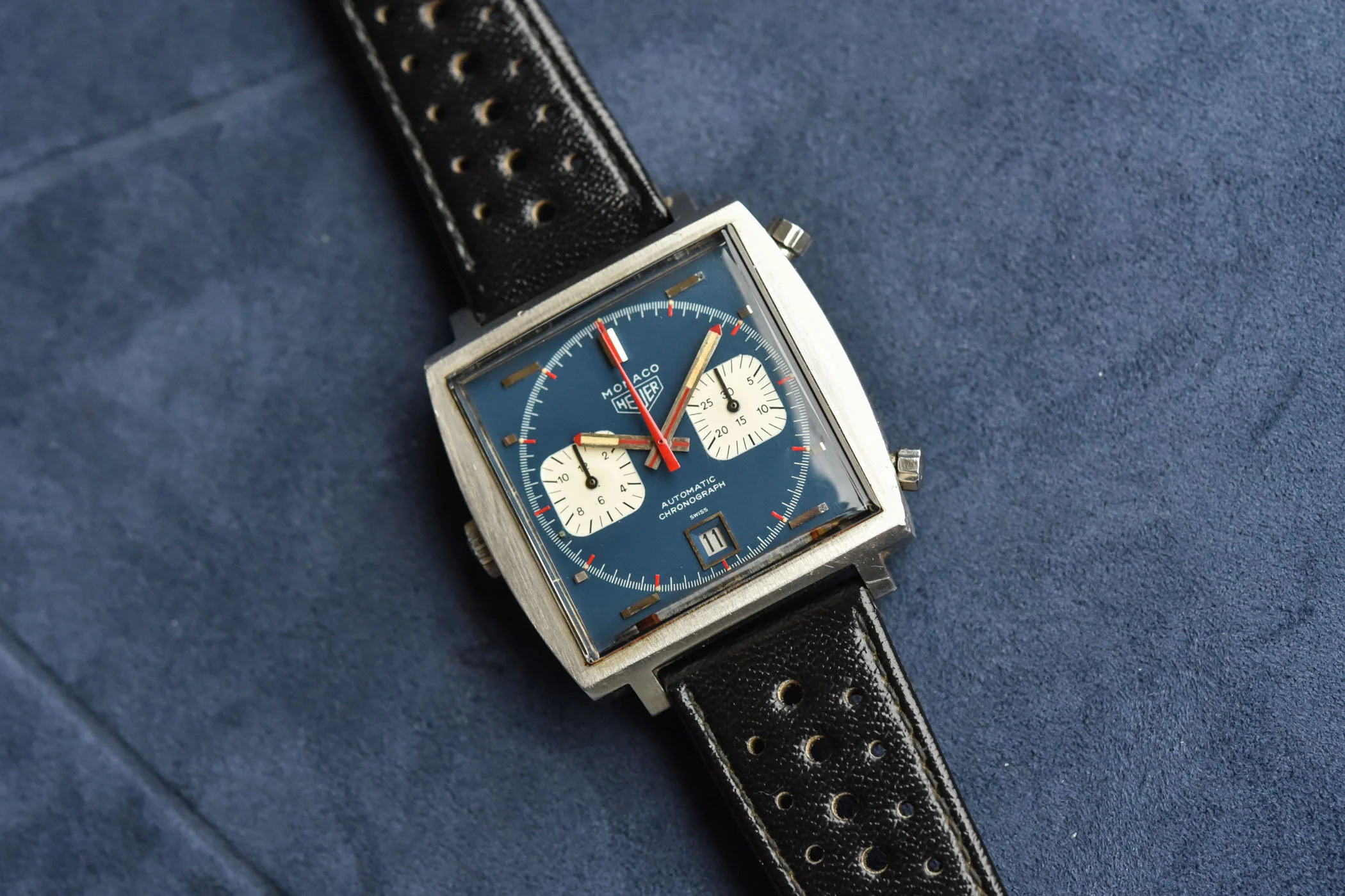In 1969, Heuer introduced the Monaco, a groundbreaking watch that would become one of the most recognizable and important modern designs in horology. It was the first square-cased, water-resistant, automatic chronograph ever made, and its bold, unconventional design immediately set it apart in an industry dominated by round watches.
The release of the Monaco came during a landmark year in watchmaking history: the debut of the first generation of self-winding chronograph movements. Heuer (now TAG Heuer) was part of this revolution with the launch of its Calibre 11 movement. Heuer initially intended to use the new movement in the Carrera model, but the case was too slim for the thicker Calibre 11. Instead, Heuer designed a completely new model and introduced the Monaco—a square case design that was never before used for an automatic chronograph.
Creating a square chronograph case that was water-resistant was a technical challenge at the time. Unlike round cases, which can be sealed with commonly produced circular gaskets that provide a consistent and reliable seal, square cases require custom square gaskets that are more complex to manufacture. Additionally, chronograph watches are more difficult to make water-resistant because of their pushers.
The watch was named after the Monaco Grand Prix, one of the most prestigious and technically demanding Formula 1 races. The race is held on the streets of Monte Carlo and is a test of driver skill and precision. The name “Monaco” perfectly reflected the technical innovation behind the watch’s design.
The Monaco gained mainstream attention in 1971 when Steve McQueen famously wore it in the racing film Le Mans. He wore the blue-dial reference 1133B and gave the watch significant exposure, forever linking it to motorsport and cinematic culture. McQueen took inspiration from Swiss racing driver Jo Siffert, a Porsche factory driver and Heuer’s first official brand ambassador, who also served as a consultant on the film. To honor Siffert, McQueen modeled his character after him, wearing the same racing suit with a Heuer logo on the chest. Although Siffert usually wore the round-case Heuer Autavia, McQueen chose the unconventional square-cased Monaco, further cementing its unique status and rebellious image.
The original Heuer Monaco was launched in two variations: reference 1133B with a blue dial and reference 1133G with a grey dial. Both versions featured the Calibre 11 movement and the square-cased design that made the Monaco a technical and cultural icon.



